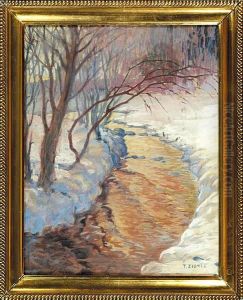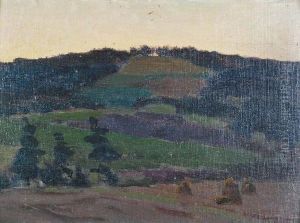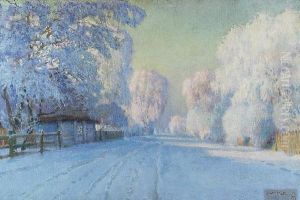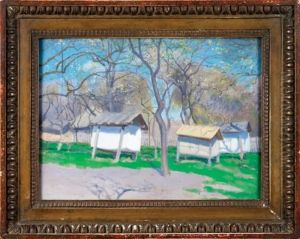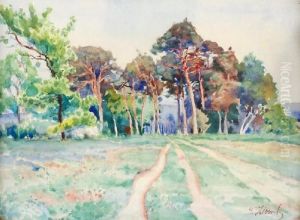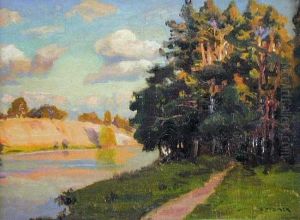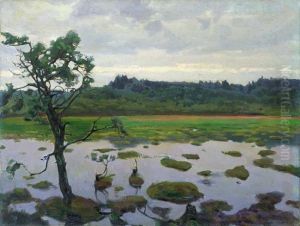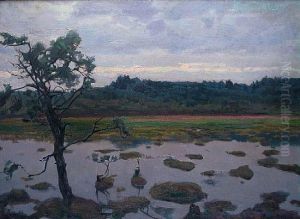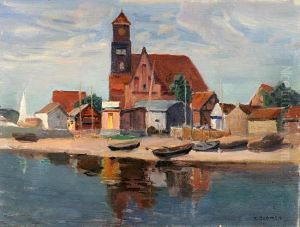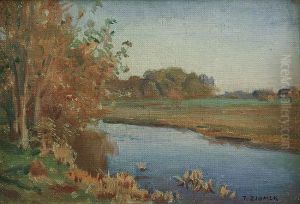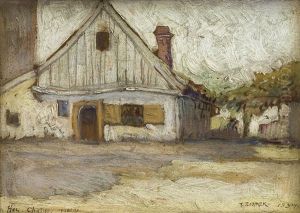Teodor Ziomek Paintings
Teodor Ziomek was a Polish painter and illustrator, associated with the Young Poland movement, which sought to define a distinct Polish culture and aesthetics in the face of foreign partitions. Born on December 24, 1864, in the town of Miechów, Ziomek initially studied at the School of Fine Arts in Kraków. He continued his education in Munich at the Academy of Fine Arts, which was a popular destination for many Polish artists at the time.
Ziomek's work was primarily influenced by Polish folklore, history, and the rural landscapes of his homeland. He was known for his attention to detail and the ability to evoke emotion through his depiction of simple life scenes and historical events. As an illustrator, Ziomek contributed to various magazines and publications, thereby helping to popularize the Young Poland movement's ideals and aesthetic values.
Throughout his career, Ziomek participated in numerous exhibitions and received accolades for his contributions to Polish art. His paintings often depicted scenes from peasant life, showing a romanticized view of the countryside that played into the nationalistic sentiments of the era. Despite the political turmoil of his time, including World War I and the subsequent rebirth of Poland as an independent nation in 1918, Ziomek continued to focus on the beauty of Polish culture and the resilience of its people.
Ziomek's legacy is preserved through his art, which remains on display in various museums and galleries in Poland. He passed away on November 8, 1941, leaving behind a body of work that continues to inspire and inform the understanding of Polish national identity during a critical period in the country's history.





